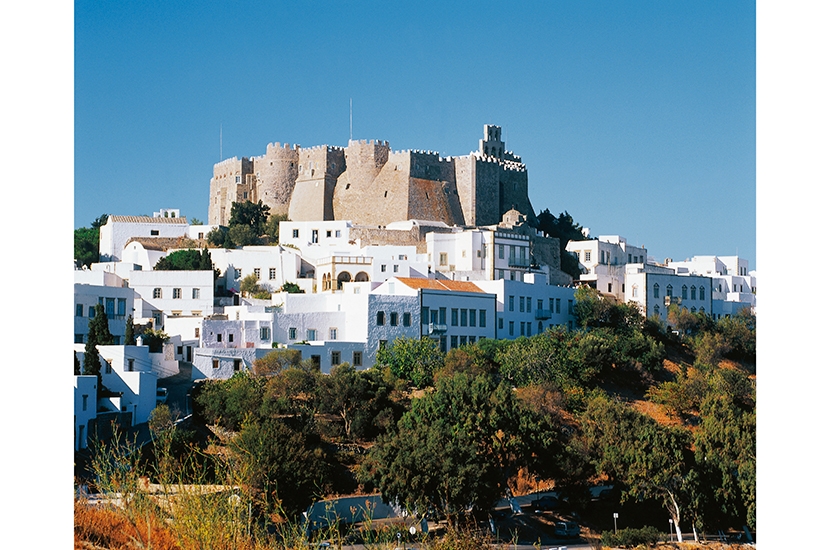Patmos
I’m in Patmos with four grandchildren, two children, and a wife. I know, I know, it sounds very lower–middle-class and only Bournemouth and some sunbeds are missing, but who cares. Children have friends, and grandchildren even younger friends, so it’s not all gloom and doom.
The princely Schwarzenbergs are here — the mother is Greek — and so is half of Vienna, not to mention Florence, Venice and Rome. At dinner the other night up at the piazza, which holds about 40 tables, there was not a single Philip Green-type among the guests, and looking back I cannot remember having had a more pleasant dinner setting ever, other than perhaps once in Sienna long ago. Chora, the section of the island where the piazza is located, would match any town or village as far as beauty is concerned. IRTs (international rich trash) go to Mykonos, the South of France or even now the Hamptons. Upper-class sensitive souls go to Patmos. My son’s boy Taki is 15 and his daughter Maria, 13. My daughter’s boy Antonius is two and a half, her girl Theodora, a one-year-old.
Commanding and imperious, the Monastery of St John the Divine stands at the island’s highest point trumpeting the Greek Orthodox faith. The Greeks call Patmos the Jerusalem of the Aegean because within a cave John, the disciple of Christ, envisioned the Apocalypse while banished by the Roman emperor Domitian in AD 95. The Monastery was founded in 1088 and it continued to function as a Christian beacon throughout Venetian, Turkish and Italian invasions. I first came here on Bushido number one long ago. The place was empty and wonderful, the locals friendly and softer than on other islands.
I had a Swedish girl on board, and on the first day she stripped off her top, as Swedes tended to do before the rest of the world’s females followed.








Comments
Join the debate for just £1 a month
Be part of the conversation with other Spectator readers by getting your first three months for £3.
UNLOCK ACCESS Just £1 a monthAlready a subscriber? Log in